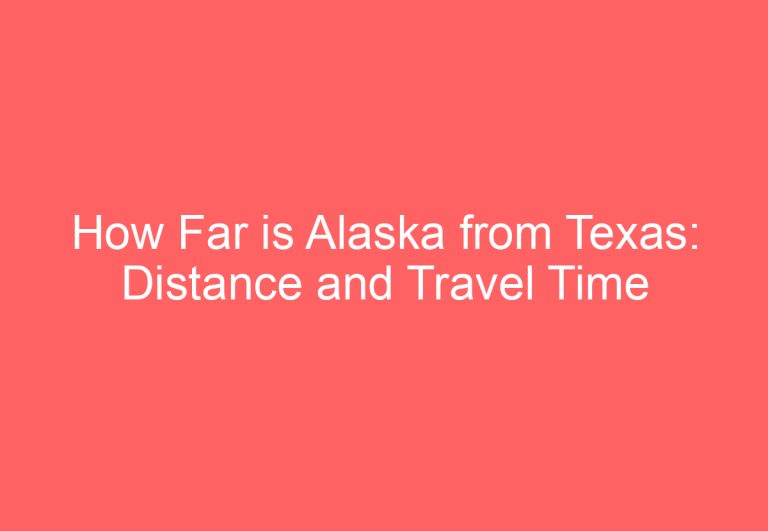Is All of Alaska Dark for 6 Months? Exploring the Phenomenon of Polar Night
Alaska is known for its stunning natural beauty and unique geographic features, but it is also known for its extreme weather conditions. One of the most popular myths about Alaska is that it experiences six months of complete darkness. Many people believe that Alaska is a place where the sun never rises and that residents must live in total darkness for half of the year.

However, this myth is not entirely accurate. While it is true that some parts of Alaska experience long periods of darkness during the winter months, not all of Alaska is dark for six months. In fact, only the most extreme poles of the earth have a full six months of darkness and six months of light, and no part of Alaska is north enough to experience this phenomenon.
So, what is the reality of darkness in Alaska? The amount of daylight and darkness varies depending on the time of year and the location within the state. The northernmost parts of Alaska can experience up to 80 days of continuous daylight during the summer months, while the same areas can have up to 80 days of continuous darkness during the winter months. Other parts of Alaska, such as the southeast region, experience more balanced daylight and darkness throughout the year.
Understanding Alaska’s Unique Daylight Cycle

Alaska is known for its extreme daylight cycles, with some areas experiencing 24-hour daylight during the summer months and extended periods of darkness during the winter. The state’s unique location and geography play a significant role in its daylight patterns.
Geographic Influence on Sunlight
Alaska is located above the Arctic Circle, which means that during the winter solstice (around December 21st), the state experiences very short days with limited sunlight. Conversely, during the summer solstice (around June 21st), the state experiences very long days with extended periods of sunlight. The amount of daylight varies depending on the location within the state. For example, the northernmost city of Utqiaġvik experiences 24-hour daylight for 82 days straight during the summer months, while other areas such as Anchorage and Juneau experience more traditional daylight cycles.
Variations in Daylight Throughout the Year
Alaska’s daylight patterns are not constant throughout the year. During the winter months, some areas of the state experience extended periods of darkness, commonly referred to as the polar night. However, the state as a whole does not experience six months of uninterrupted darkness. The amount of daylight and darkness varies depending on the time of year and the location within the state.
Misconceptions About Constant Darkness
Contrary to popular belief, Alaska does not experience six months of constant darkness. While some areas may experience extended periods of darkness during the winter, the state as a whole experiences variations in daylight throughout the year. Additionally, while the state’s unique daylight patterns can pose challenges for residents, they also have benefits such as 24-hour daylight during the summer months.
Overall, Alaska’s unique location and geography contribute to its extreme daylight cycles. While some areas may experience extended periods of darkness during the winter, the state as a whole does not experience six months of constant darkness. Understanding Alaska’s daylight patterns is crucial for residents and visitors alike to prepare for the state’s unique climate and energy needs.
Cultural and Lifestyle Adaptations in Alaska

Impact on Residents and Wildlife
Alaska’s extreme climate and location have a significant impact on its residents and wildlife. During the winter months, some parts of Alaska experience periods of extended darkness, particularly around the Winter Solstice. However, the state as a whole does not experience six months of uninterrupted darkness. In fact, the amount of daylight and darkness in Alaska varies greatly depending on the location and season.
The extended period of darkness in Alaska can affect one’s mental health, leading to depression or Seasonal Affective Disorder (SAD). However, residents have adapted to this lack of sunlight by using light therapy and blackout curtains to improve their mood and sleep patterns. Alaska’s wildlife has also adapted to the darkness by changing their behavior and hibernating during the winter months.
Outdoor Activities and Tourism
Alaska’s natural beauty and unique landscape make it a popular destination for outdoor activities and tourism. During the summer months, Alaska experiences continuous daylight in some regions, leading to the nickname “Land of the Midnight Sun.” This allows for extended outdoor activities such as hiking, fishing, and wildlife viewing.
In contrast, during the winter months, Alaska’s landscape transforms into a winter wonderland, providing opportunities for activities such as skiing, dog sledding, and snowmobiling. The lack of sunlight also creates ideal conditions for Aurora viewing, attracting tourists from around the world.
Prudhoe Bay, Barrow, and other locations north of the Arctic Circle experience extended periods of darkness during the winter months, making it challenging to produce crops and maintain a traditional way of life. However, residents have adapted by using greenhouses and other technologies to produce food and maintain their lifestyle.
Ketchikan and Mendenhall Glacier are popular tourist destinations due to their natural beauty and outdoor activities. Despite the challenges posed by Alaska’s extreme climate and location, residents and tourists continue to embrace the unique experiences and opportunities that Alaska has to offer.
Frequently Asked Questions

What are the daylight hours by month in Alaska?
The amount of daylight in Alaska varies greatly by season and location. During the summer months, some parts of the state experience 24-hour daylight, while other areas have only a few hours of darkness. In contrast, during the winter months, some areas of Alaska experience very short days with only a few hours of daylight, while other parts of the state have extended periods of darkness.
During which months is Alaska light all day?
Alaska experiences 24-hour daylight during the summer months, typically from May to August. The northernmost city of Utqiaġvik (formerly known as Barrow) experiences 24-hour daylight for 82 days straight during the peak of summer. However, this phenomenon does not occur throughout the entire state.
How long does the total darkness period last in Alaska?
The total darkness period in Alaska varies by location. Some areas of the state experience extended periods of darkness during the winter months, while other areas have only a few hours of daylight. The northernmost city of Utqiaġvik experiences a “polar night,” which can last for up to two months.
What is the shortest day of the year in Anchorage, Alaska?
The shortest day of the year in Anchorage, Alaska, occurs on the winter solstice, typically around December 21st. On this day, Anchorage experiences only about five hours and 28 minutes of daylight.
How do residents cope with extended periods of darkness in Alaska?
Residents of Alaska cope with extended periods of darkness during the winter months in various ways. Some people use light therapy to combat seasonal affective disorder (SAD), while others engage in outdoor activities such as skiing and snowboarding. Additionally, many Alaskans rely on social activities and community events to help combat feelings of isolation and depression.
Does Alaska experience darkness during the summer months?
While Alaska experiences extended periods of daylight during the summer months, it is not completely light all day. Some areas of the state still experience periods of darkness, although they are much shorter than during the winter months.






